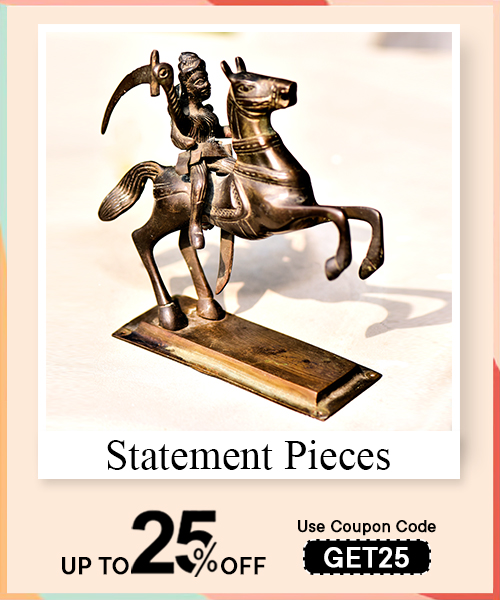Pongal has a long history that stretches back to its heritage and is deeply embedded in Tamil Nadu's agricultural traditions, a southern state in India. Pongal Festival was created more than 2,000 years ago, during the Sangam era, an era of prosperity for Tamil literature and culture. Pongal is a Dravidian harvest celebration that traces back to the Sangam Age, as mentioned in the Sanskrit Puranas. Historians say the festival connects to the Thai Un and Thai Niradal. The term "Pongal" describes the custom of cooking a unique dish of the same name. The event is strongly related to farming and the harvest season, giving farmers a chance to show gratitude for a successful harvest and pray for blessings for everlasting prosperity.
Today's Pongal festivals have their roots in Sangam Era rituals. Women of the Sangam era participated in the festivities by celebrating "Pavai Nonbu" at the time of Thai Niradal, an important festival during the Pallavas' rule (4th to 8th century AD). It occurred between December and January, during the Tamil month of Margazhi. Young girls worshipped for rain and the nation's welfare during this event. They did not consume any milk or milk products for the entire month. They avoided harsh language when talking and refused to apply oil to their hair. Women used to take morning baths. They would sculpt and worship a statue of the goddess Katyayani out of moist soil. They finished their devotion on the first day of the Thai month (January–February). The action was performed to produce plentiful rains that would help the paddy grow. Pongal celebrations are the outcome of these ancient customs and rituals.
Numerous ancient Tamil literature, including those written by the great Tamil poet Thiruvalluvar, make a tribute to the festival. Farmers could celebrate Pongal and pray for blessings for future wealth as they rejoiced in the richness of their harvests. Thai Niradal and Pavai Nonbu festivals are effectively expressed in Andal's Tiruppavai and Manickavachakar's Tiruvembavai. The Chola King Kiluttunga used to donate lands to the temple, especially for the Pongal celebrations, according to an artefact discovered in the Veeraraghava temple at Tiruvallur.
Read More : HAPPY DIWALI 2024: BEST WISHES, IMAGES, AND MESSAGES
Pongal is a significant festival in Tamil Nadu and other regions of South India about culture, society, and agriculture. The primary purpose of Pongal is to celebrate the harvest and signify the end of the traditional farming year. Farmers use this occasion to celebrate and give gratitude for a healthy crop. The festival shows how important agriculture is to people's daily lives and their close bond with the natural world.
Bright Beginnings: Pongal is a season of fresh begins and new beginnings. It signifies the start of a successful cycle and the passage from the winter to the harvest seasons, which signify the regeneration of life. The event is connected to positivity, hope, and the expectation of a prosperous year. Rituals and Traditions: Different rituals and customs believed to have been carried along through the generations define Pongal. An essential aspect of this Pongal holiday is cooking a special dish, decorating homes with vibrant patterns known as Pongal Kolam, and worshipping the Sun God (Surya Bhagavan) and farm animals. These customs have religious and cultural importance and support the preservation of the region's rich cultural heritage.
Read More : MAHAVIR JAYANTI: DATE AND DAY, HISTORY, TITHI, HISTORY
This Pongal Recipe is a unique and memorable dish found only in the southern states, especially Tamilnadu. Rice and lentils are cooked in one pot and seasoned with savoury spices to create a tasty and comforting meal. Starting with 1 cup of uncooked rice and 1/4 cup of split yellow moong dal (lentils), rinse the ingredients for Pongal until the water runs clear. Then, add the rinsed rice and dal to a pressure cooker or large saucepan with 4 cups of water. Cook the rice and dal until they are mushy and tender. 2 tablespoons of ghee (clarified butter) should be heated over medium heat in a different pan. Add one teaspoon of cumin seeds, whole black peppercorns, ginger, and a couple of chopped green chillies. The spices should be roasted for one minute to release their aroma.

Hindu mythology states that this marks the start of the gods' six-month-long day. The four-day celebration is the most significant and strongly observed harvest festival in South India. Before harvesting the paddy, a particular prayer is done on the first day of Pongal. Farmers worship the sun and the ground by applying sandalwood paste to their sickles and ploughs. The freshly harvested rice is chopped with this dedicated equipment. Four days are dedicated to the Pongal festival, celebrated with much glory and devotion. This festival will continue on Tuesday, January 14, 2025, to Friday, January 17, 2025.
The first day of Pongal is called Bhogi Pongal and is devoted to Lord Indra, the Rain God. People clean up their residences, remove unwanted items, and start the Bhogi Mantalu bonfire. The bonfire symbolises the start of a new cycle and the burning of negativity. On Bhogi Pongal, households perform unique rituals and prayers. People pray to Lord Indra to receive his blessings for plentiful crops in the upcoming year. They make offerings of recently gathered fruits, cereals, and other agricultural products. It is believed that asking Lord Indra's blessings will guarantee the crops receive timely and sufficient rain. Families also gather together to celebrate Bhogi Pongal during this time. Family members get together, greet one another, and eat joyful meals. Joyous celebrations, traditional music, dance performances, and other cultural events celebrate the day. It allows people to celebrate their cultural heritage and deepen connections with their relatives.
The second day of Pongal, or Thai Pongal, is it's most important. Today is the day that the famous dish known as Pongal is made. In a clay pot outside, newly harvested rice, jaggery (raw sugar), and other ingredients are prepared. It is a promising sign of riches and prosperity when the dish boils over and overflows. People present the Pongal meal to the Sun God (Surya Bhagavan) to gain his blessings for a fruitful coming year. A plentiful crop serves the cooked Pongal dish to Surya, the Sun God. As an offering, the food is placed on a banana leaf that has just been washed and decorated. People pray for wealth, health, and success in the upcoming year. During Pongal, homes are decorated with vibrant decorations and peacock rangoli. At the front of houses, traditional designs are painted with rice flour, coloured powders, or flower petals. These ornamental designs serve as a good luck charm and a festive touch to the celebration.
Read More : WHEN IS UTKAL DIVAS, MEANING, THEME, IMPORTANCE
The third day is referred to as Mattu Pongal and is devoted to cattle. Garlands, vermilion, and turmeric decorate cows and bulls, which are loved and essential to agriculture. They are respected and praised for their role in agriculture. On this day, bull races and other events involving cattle are organised. The day is a time for cultural festivals as well as the worship of cattle. Bullfights, or "Jallikattu," are held in several regions of Tamil Nadu. These competitions highlight the ancient sport where competitors attempt to grab a running bull's hump. Jallikattu has a long history in Tamil culture and is still actively played today. Due to the importance of cattle in agriculture, Mattu Pongal also has economic significance. They are necessary to farmers for transportation, milk production, and field preparation. Admiring cattle shows an appreciation for their economic worth and contribution to farmers' livelihoods.
Pongal's fourth and final day is called Kaanum Pongal, meaning "seeing the Pongal." It is a day for family gatherings and vacations. Greetings are offered, relatives are visited, and festive meals are enjoyed. A day for outdoor activities like picnics and games are held on this day. The custom of feeding animals and birds is one special feature of Kaanum Pongal. As threats to birds and other creatures, people leave leftover Pongal and other foods on rooftops, in open areas, or beside water sources. This behaviour shows gratitude, generosity, and empathy towards other living things. Traditional practices are connected to Kaanum Pongal, along with outdoor activities. Sisters engage in a custom known as "Kaka Pidi Kannu", in which they pray for their brothers' welfare and provide them with food made of sugarcane and various fruits.
Read More : GUDI PADWA: THE SIGNIFICANCE AND TRADITIONS OF THE FESTIVAL
Pongal is a significant festival in Tamil Nadu's culture and society. It focuses on gratitude for nature's blessings, celebrates the region's agricultural past, and encourages unity and cooperation among communities and households. The festival of Pongal enhances family and community bonds, honours the area's rural heritage, and stimulates feelings of thankfulness, re-growth, and hope for the future.















